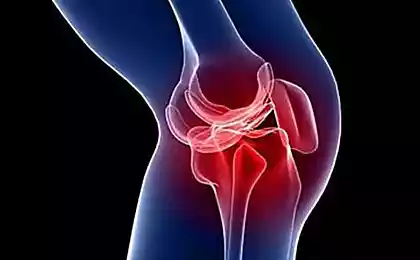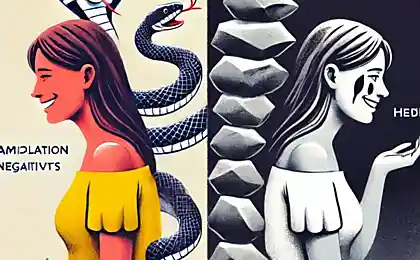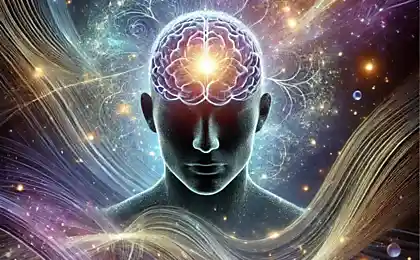246
Contagious thoughts that can kill
Sometimes it is enough to believe that you are sick. As BBC Future found out, we can unwittingly pick up similar irrational fears from others - sometimes with dire consequences.
Avoid lovers of fear. Like the magicians, they can do you harm.
It has long been known that autosuggestion can cause disease without the presence of infection. Just as voodoo priests were able to harm their prey by the power of suggestion, often a person’s belief that they were sick can lead to the development of real symptoms of the disease – such as nausea or dizziness – and even death. This phenomenon is known as the nocebo effect (as opposed to the placebo effect).
Nowadays, it has become obvious that dangerous suggestions are easily spread in the form of rumors and gossip, and the negative effect of them is extremely large. Perhaps this is why some homes are considered cursed, as their occupants invariably get sick and people living near wind turbines complain of unexplained bouts of dizziness, insomnia and nausea. If you’ve ever had to experience “flu” symptoms after a vaccination, suspect your mobile phone is causing you headaches, or suffer from an unexpected allergy to certain foods, it’s possible that you too have been a victim of nocebo.
“The nocebo effect illustrates well what our minds are capable of,” says neurologist Dimos Mitsikostas of the Naval Hospital in Athens. And we cannot fully explain it.
Doctors have long known that suggestion can have a deadly effect on a person. Viennese physician of the VIII century Erich Menninger von Lerhental described a bad student joke with a tragic outcome: the students in his medical school disliked one assistant and conceived to teach him a lesson. The assistant was suddenly attacked, blindfolded, put his head on the deck and announced that he would now be beheaded. Then a wet cloth was thrown around his neck. Convinced that it was cold blade steel, the unfortunate, according to the description of Von Lergenthal, “died there.”
A placebo carries with it everything that a real medicine does – both relief and side effects.
While stories like this abound, modern medical research has so far largely explored the human mind’s capacity for self-destruction rather than self-healing – the so-called placebo effect, which is Latin for “like.” Nowadays, placebo is used in any clinical trial - the test drug and the "dummy" control drug (usually in the form of lactose-based tablets) are randomly distributed among the subjects. Patients don’t know what they’ve got. At the same time, a certain positive effect is observed even when taking a placebo, due to the belief of the subject in the healing power of the drug.
However, in addition to the observed positive effect of placebo, patients often complain of unexplained unpleasant symptoms - nausea, headaches or other pain. The fact is that all participants in a clinical trial - regardless of whether they got a real medicine or a "dummy" - are warned about the possible side effects of the test drug. It seems that in some patients taking placebo, the very anticipation of the possible occurrence of such effects can lead to their occurrence. “This phenomenon has been observed from one study to another, but it has never really been studied,” says Ted Kapchuk, a professor at Harvard Medical School.
Over the past 10 years, scientists have found that the nocebo effect (translated from Latin – “damage”) is very common. Mitsikostas studied the results of studies of remedies for migraine, multiple sclerosis and depression. In many similar studies, he found pronounced manifestations of the nocebo effect. Thus, in clinical trials of drugs for Parkinson’s disease, up to 65% of those taking placebo complained about the negative effects of therapy. “As a result, about one in 10 patients left the study program before it was completed, which is a very large number,” he notes.
Although many of these symptoms, such as nausea or pain, can be explained by subjective sensations, the nocebo effect sometimes manifests itself in the form of rashes and irritations of the skin. And sometimes it can be detected during physiological testing. “This is incredible: the patient is only taking sugar pills, but the tests indicate an increased content of enzymes in the liver,” says Mitsikostas.
Sometimes it is enough just to fear the disease. Skeptics may argue that the patient’s brain probably “instills” the presence of such side effects, but measurements of the nervous system activity of people experiencing the nocebo effect have shown that after taking a placebo, the spinal cord begins to register an increase in pain before the brain responsible for conscious thinking has time to connect.
Take the near-death case of “Patient A,” which Dr. Roy Reeves reported in 2007. A patient suffering from depression took a whole bubble of pills, deciding to take his own life. Almost immediately regretting his decision, he rushed to the hospital, but collapsed on the threshold of the emergency room. His condition looked very serious - doctors recorded a sharp drop in blood pressure and hyperventilation of the lungs. The patient was immediately placed under an IV, but a blood test did not find a trace of the medication in his body. Four hours later, another doctor informed Reeves that the man was part of a control group as part of a clinical trial and that overdose symptoms had occurred after taking a placebo. Shortly after patient A learned about this, his health returned to normal.
It is not known whether the case could have been fatal, although neuroscience professor Fabrizio Benedetti of the University of Turin School of Medicine believes it is likely. He scanned the brains of subjects while they were indoctrinated with negative thoughts, and came to the conclusion that such suggestions activate the hypothalamus, pituitary glands and adrenal glands (glands that produce adrenaline), which are designed to respond to extreme threats to the body. If a person fears something enough, a cocktail of hormones produced by these organs can be deadly, Benedetti said.
The very idea that a doctor may inadvertently worsen a patient's condition with a careless word is worrisome. And now it becomes obvious that even hearing or gossip heard in passing is enough to spread the nocebo effect.
Last year, Benedetti set up an experiment, inviting more than a hundred students to take part in the climb to a height of 3,000 meters in the Italian Alps. A few days before the planned hike, he told one of the potential participants about the possible negative consequences of being at high altitude in the form of migraines caused by rarefied air. By the appointed day, it was discovered that the hearing had spread to more than a quarter of the group, and all who heard it began to suffer severe headaches. Moreover, saliva analysis of these students indicated a hyperresponse to decreased oxygen content in the body, including an increase in the activity of enzymes associated with manifestations of mountain sickness (one symptom of which is headache). “The impressionable students changed their brain chemistry,” Benedetti said.
After each report in the media about ailments from the type of wind turbines, the number of such cases increases sharply.
In other words, negative suggestions that can cause symptoms can be contagious. "They are being passed on to friends and neighbors, spreading rapidly among the population," Benedetti said. In another study, it was found that even when another patient is in pain, the treatment procedure can cause the subject more painful sensation than in the usual state – that is, apparently, the nocebo effect can be transmitted from one person to another nonverbally, through simple visual observation. Worse, negative thoughts can be infected without even realizing it. It seems that the nocebo effect can trigger signals coming from our subconscious.
History is replete with mysterious epidemics, which can be explained by the nocebo effect. The most famous outbreak of chorea (disorderly uncontrolled movements) occurred in Strasbourg in France in 1518 and ended in several deaths. In the 1960s, workers in an American textile factory were struck by the June bug epidemic, which was expressed in dizziness and vomiting. No poisonous insect has ever been recognized as the cause of this condition. The most chilling was a string of mysterious deaths in the Hmong community, who emigrated to the United States from Southeast Asia in the 1980s. Healthy young people began to suffer from regular nightmares and sleep paralysis, after which they died in their sleep. Experts hypothesized that these deaths were the reason for the sincere belief of the Hmong in the existence of evil nocturnal spirits.
Often the cause of malaise can be fear of new technological advances: at the end of the XIX century. people using the first telephone devices complained of dizziness and severe headaches, and office workers in Scandinavia in the 1980s. there was a rash on the skin - according to one version, because of computer monitors they used at work.
Today, the nocebo effect is considered the most likely cause of disorders such as “wind turbine syndrome” (nausea and insomnia associated with living near wind turbines), especially common in Canada, as well as “electrosensitivity” – allegedly an allergic reaction to mobile phone signals and wireless Internet. Sometimes sufferers even have to surround their beds with metal screens to avoid constant ringing in the ears – and dozens of experiments have convincingly proved that the same symptoms develop in people in the presence of a broken source of electromagnetic waves, if they are told that it actually works.
The results of the study of the nocebo effect indicate that the ailments that it can cause should not be neglected. "I have no doubt that people actually experience the physiological symptoms of disease," says psychology professor James Rubin of King's College London. Even the former head of the World Health Organization experienced the effect of nocebo: she banned the use of mobile phones in her office because she was sure that they caused her severe headaches.
Symptoms of electrosensitivity are not as common, but the nocebo effect can manifest itself in other ways. Have you experienced an inexplicable intolerance to certain foods? 20% of the population of England suffer from allergies to certain foods, although, according to hospital tests, only about a tenth of this number have medical problems that can explain this phenomenon. The nocebo effect may also explain some people’s symptoms of malaise after placebo injection when testing new vaccines, as well as the widely discussed side effects of pharmacological contraceptives (depression, migraines and chest pain), the presence of which is largely not clinically confirmed. To this list, you can probably add the nausea and visual fatigue that some users of three-dimensional television complain about.
In order to get infected with toxic thoughts, it is not necessary to fall under the spell of an evil sorcerer.
So what can we do? Fighting people’s delusions and suggestibility is, of course, very difficult, but a responsible media approach would at least help to contain the spread of harmful rumors. In 2013, Rubin found that just watching a short video on electrosensitivity could be enough to cause subjects to develop symptoms. There are also data indicating the possibility that the number of applications to medical institutions with complaints about “wind turbine syndrome” is growing after reports in local media about the potential harm of wind turbines. In other words, the disease can be caused only by the fear of a person for his health.
What about the medical staff? Rebecca Wells of the Wake Forest University Baptist Medical Center in North Carolina notes that this is a serious dilemma for modern medicine. Doctors are required to disclose information to patients about possible side effects of drugs, since they need to obtain the so-called “informed consent” of the patient to conduct treatment. However, in certain cases, as we see, the very fact of informing can worsen the patient's condition. “There is no definitive answer to the question of what exactly a drug has,” Wells says. In her opinion, in the future, doctors may have to reconsider the existing approach, taking into account what information should be disclosed to patients and how it should be presented. Caution is important on a case-by-case basis – as Benedetti points out, due to the contagiousness of the nocebo effect, side effects experienced by one person can quickly spread to large populations.
Perhaps education can help reduce the nocebo effect. For example, Mitsikostas tries to explain to patients that they should be critical of their own expectations of an event. “You need to get the patient to deal with their inner fears,” he says.
According to Mitsikostas, the connection between the psyche and somatics cannot be ignored despite modern advances in health care. “For thousands of years, all medicine has in fact been a placebo – healers have treated people using the desire of the sick to recover themselves. The patient’s will to heal is not enough, but a prerequisite for successful treatment, he says.
Credit: David Robson
Read the original article in English on the BBC Future website. published
Source: www.bbc.co.uk/russian/science/2015/03/150311_vert_fut_can_you_think_yourself_to_death? ocid=socialflow_facebook
Avoid lovers of fear. Like the magicians, they can do you harm.
It has long been known that autosuggestion can cause disease without the presence of infection. Just as voodoo priests were able to harm their prey by the power of suggestion, often a person’s belief that they were sick can lead to the development of real symptoms of the disease – such as nausea or dizziness – and even death. This phenomenon is known as the nocebo effect (as opposed to the placebo effect).
Nowadays, it has become obvious that dangerous suggestions are easily spread in the form of rumors and gossip, and the negative effect of them is extremely large. Perhaps this is why some homes are considered cursed, as their occupants invariably get sick and people living near wind turbines complain of unexplained bouts of dizziness, insomnia and nausea. If you’ve ever had to experience “flu” symptoms after a vaccination, suspect your mobile phone is causing you headaches, or suffer from an unexpected allergy to certain foods, it’s possible that you too have been a victim of nocebo.
“The nocebo effect illustrates well what our minds are capable of,” says neurologist Dimos Mitsikostas of the Naval Hospital in Athens. And we cannot fully explain it.
Doctors have long known that suggestion can have a deadly effect on a person. Viennese physician of the VIII century Erich Menninger von Lerhental described a bad student joke with a tragic outcome: the students in his medical school disliked one assistant and conceived to teach him a lesson. The assistant was suddenly attacked, blindfolded, put his head on the deck and announced that he would now be beheaded. Then a wet cloth was thrown around his neck. Convinced that it was cold blade steel, the unfortunate, according to the description of Von Lergenthal, “died there.”
A placebo carries with it everything that a real medicine does – both relief and side effects.
While stories like this abound, modern medical research has so far largely explored the human mind’s capacity for self-destruction rather than self-healing – the so-called placebo effect, which is Latin for “like.” Nowadays, placebo is used in any clinical trial - the test drug and the "dummy" control drug (usually in the form of lactose-based tablets) are randomly distributed among the subjects. Patients don’t know what they’ve got. At the same time, a certain positive effect is observed even when taking a placebo, due to the belief of the subject in the healing power of the drug.
However, in addition to the observed positive effect of placebo, patients often complain of unexplained unpleasant symptoms - nausea, headaches or other pain. The fact is that all participants in a clinical trial - regardless of whether they got a real medicine or a "dummy" - are warned about the possible side effects of the test drug. It seems that in some patients taking placebo, the very anticipation of the possible occurrence of such effects can lead to their occurrence. “This phenomenon has been observed from one study to another, but it has never really been studied,” says Ted Kapchuk, a professor at Harvard Medical School.
Over the past 10 years, scientists have found that the nocebo effect (translated from Latin – “damage”) is very common. Mitsikostas studied the results of studies of remedies for migraine, multiple sclerosis and depression. In many similar studies, he found pronounced manifestations of the nocebo effect. Thus, in clinical trials of drugs for Parkinson’s disease, up to 65% of those taking placebo complained about the negative effects of therapy. “As a result, about one in 10 patients left the study program before it was completed, which is a very large number,” he notes.
Although many of these symptoms, such as nausea or pain, can be explained by subjective sensations, the nocebo effect sometimes manifests itself in the form of rashes and irritations of the skin. And sometimes it can be detected during physiological testing. “This is incredible: the patient is only taking sugar pills, but the tests indicate an increased content of enzymes in the liver,” says Mitsikostas.
Sometimes it is enough just to fear the disease. Skeptics may argue that the patient’s brain probably “instills” the presence of such side effects, but measurements of the nervous system activity of people experiencing the nocebo effect have shown that after taking a placebo, the spinal cord begins to register an increase in pain before the brain responsible for conscious thinking has time to connect.
Take the near-death case of “Patient A,” which Dr. Roy Reeves reported in 2007. A patient suffering from depression took a whole bubble of pills, deciding to take his own life. Almost immediately regretting his decision, he rushed to the hospital, but collapsed on the threshold of the emergency room. His condition looked very serious - doctors recorded a sharp drop in blood pressure and hyperventilation of the lungs. The patient was immediately placed under an IV, but a blood test did not find a trace of the medication in his body. Four hours later, another doctor informed Reeves that the man was part of a control group as part of a clinical trial and that overdose symptoms had occurred after taking a placebo. Shortly after patient A learned about this, his health returned to normal.
It is not known whether the case could have been fatal, although neuroscience professor Fabrizio Benedetti of the University of Turin School of Medicine believes it is likely. He scanned the brains of subjects while they were indoctrinated with negative thoughts, and came to the conclusion that such suggestions activate the hypothalamus, pituitary glands and adrenal glands (glands that produce adrenaline), which are designed to respond to extreme threats to the body. If a person fears something enough, a cocktail of hormones produced by these organs can be deadly, Benedetti said.
The very idea that a doctor may inadvertently worsen a patient's condition with a careless word is worrisome. And now it becomes obvious that even hearing or gossip heard in passing is enough to spread the nocebo effect.
Last year, Benedetti set up an experiment, inviting more than a hundred students to take part in the climb to a height of 3,000 meters in the Italian Alps. A few days before the planned hike, he told one of the potential participants about the possible negative consequences of being at high altitude in the form of migraines caused by rarefied air. By the appointed day, it was discovered that the hearing had spread to more than a quarter of the group, and all who heard it began to suffer severe headaches. Moreover, saliva analysis of these students indicated a hyperresponse to decreased oxygen content in the body, including an increase in the activity of enzymes associated with manifestations of mountain sickness (one symptom of which is headache). “The impressionable students changed their brain chemistry,” Benedetti said.
After each report in the media about ailments from the type of wind turbines, the number of such cases increases sharply.
In other words, negative suggestions that can cause symptoms can be contagious. "They are being passed on to friends and neighbors, spreading rapidly among the population," Benedetti said. In another study, it was found that even when another patient is in pain, the treatment procedure can cause the subject more painful sensation than in the usual state – that is, apparently, the nocebo effect can be transmitted from one person to another nonverbally, through simple visual observation. Worse, negative thoughts can be infected without even realizing it. It seems that the nocebo effect can trigger signals coming from our subconscious.
History is replete with mysterious epidemics, which can be explained by the nocebo effect. The most famous outbreak of chorea (disorderly uncontrolled movements) occurred in Strasbourg in France in 1518 and ended in several deaths. In the 1960s, workers in an American textile factory were struck by the June bug epidemic, which was expressed in dizziness and vomiting. No poisonous insect has ever been recognized as the cause of this condition. The most chilling was a string of mysterious deaths in the Hmong community, who emigrated to the United States from Southeast Asia in the 1980s. Healthy young people began to suffer from regular nightmares and sleep paralysis, after which they died in their sleep. Experts hypothesized that these deaths were the reason for the sincere belief of the Hmong in the existence of evil nocturnal spirits.
Often the cause of malaise can be fear of new technological advances: at the end of the XIX century. people using the first telephone devices complained of dizziness and severe headaches, and office workers in Scandinavia in the 1980s. there was a rash on the skin - according to one version, because of computer monitors they used at work.
Today, the nocebo effect is considered the most likely cause of disorders such as “wind turbine syndrome” (nausea and insomnia associated with living near wind turbines), especially common in Canada, as well as “electrosensitivity” – allegedly an allergic reaction to mobile phone signals and wireless Internet. Sometimes sufferers even have to surround their beds with metal screens to avoid constant ringing in the ears – and dozens of experiments have convincingly proved that the same symptoms develop in people in the presence of a broken source of electromagnetic waves, if they are told that it actually works.
The results of the study of the nocebo effect indicate that the ailments that it can cause should not be neglected. "I have no doubt that people actually experience the physiological symptoms of disease," says psychology professor James Rubin of King's College London. Even the former head of the World Health Organization experienced the effect of nocebo: she banned the use of mobile phones in her office because she was sure that they caused her severe headaches.
Symptoms of electrosensitivity are not as common, but the nocebo effect can manifest itself in other ways. Have you experienced an inexplicable intolerance to certain foods? 20% of the population of England suffer from allergies to certain foods, although, according to hospital tests, only about a tenth of this number have medical problems that can explain this phenomenon. The nocebo effect may also explain some people’s symptoms of malaise after placebo injection when testing new vaccines, as well as the widely discussed side effects of pharmacological contraceptives (depression, migraines and chest pain), the presence of which is largely not clinically confirmed. To this list, you can probably add the nausea and visual fatigue that some users of three-dimensional television complain about.
In order to get infected with toxic thoughts, it is not necessary to fall under the spell of an evil sorcerer.
So what can we do? Fighting people’s delusions and suggestibility is, of course, very difficult, but a responsible media approach would at least help to contain the spread of harmful rumors. In 2013, Rubin found that just watching a short video on electrosensitivity could be enough to cause subjects to develop symptoms. There are also data indicating the possibility that the number of applications to medical institutions with complaints about “wind turbine syndrome” is growing after reports in local media about the potential harm of wind turbines. In other words, the disease can be caused only by the fear of a person for his health.
What about the medical staff? Rebecca Wells of the Wake Forest University Baptist Medical Center in North Carolina notes that this is a serious dilemma for modern medicine. Doctors are required to disclose information to patients about possible side effects of drugs, since they need to obtain the so-called “informed consent” of the patient to conduct treatment. However, in certain cases, as we see, the very fact of informing can worsen the patient's condition. “There is no definitive answer to the question of what exactly a drug has,” Wells says. In her opinion, in the future, doctors may have to reconsider the existing approach, taking into account what information should be disclosed to patients and how it should be presented. Caution is important on a case-by-case basis – as Benedetti points out, due to the contagiousness of the nocebo effect, side effects experienced by one person can quickly spread to large populations.
Perhaps education can help reduce the nocebo effect. For example, Mitsikostas tries to explain to patients that they should be critical of their own expectations of an event. “You need to get the patient to deal with their inner fears,” he says.
According to Mitsikostas, the connection between the psyche and somatics cannot be ignored despite modern advances in health care. “For thousands of years, all medicine has in fact been a placebo – healers have treated people using the desire of the sick to recover themselves. The patient’s will to heal is not enough, but a prerequisite for successful treatment, he says.
Credit: David Robson
Read the original article in English on the BBC Future website. published
Source: www.bbc.co.uk/russian/science/2015/03/150311_vert_fut_can_you_think_yourself_to_death? ocid=socialflow_facebook























